I’ve been there: drenched in sweat after a brutal workout, or feeling like a raisin after a night out. When dehydration hits, you need something more than water to bounce back. That’s where Liquid I.V. and Pedialyte come in—two heavyweights in the hydration game.
In this article, I’ll break down their key features, weigh their pros and cons, and help you decide which one suits your needs. From taste to cost to science-backed hydration, I’m sharing my experience to guide you through this face-off.
Let’s find your perfect hydration partner!
A Brief Comparison Table
| Feature | Liquid I.V. | Pedialyte |
| Primary Use | Hydration for workouts, travel, hangovers | Rehydration for illness, kids, adults |
| Form | Powder packets (mix with 16 oz water) | Pre-mixed liquid, powder packets (mix with 8-12 oz water) |
| Key Electrolytes | Sodium (500 mg), Potassium (380 mg) | Sodium (370-1030 mg), Potassium (280-780 mg), Chloride |
| Calories per Serving | 45-50 | 25-40 |
| Sugar Content | 11 g (cane sugar, stevia) | 9-25 g (dextrose, sucralose) |
| Additional Nutrients | Vitamins B3, B5, B6, B12, C | Zinc, prebiotics (some formulas) |
| Flavors | Strawberry, Watermelon, Lemon Lime, more | Grape, Cherry, Unflavored, more |
| Cost per Serving | ~$1.50 | ~$1-$2 |
| Special Features | Cellular Transport Technology (CTT) | WHO-based rehydration formula |
| Target Audience | Athletes, active adults | All ages, especially kids and ill adults |
My Journey With Hydration: Why This Matters?
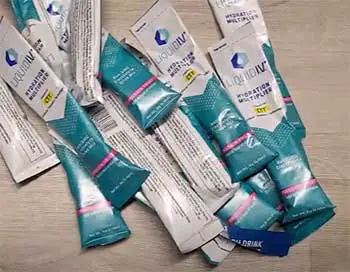
I remember the first time I realized water alone wasn’t cutting it.
It was a scorching summer day, and I’d just finished a 5K run.
My mouth was dry, my legs felt like jelly, and I was chugging water like it was my job—yet I still felt off.
That’s when I started exploring electrolyte drinks. Liquid I.V. and Pedialyte kept popping up as go-to options, each promising to replenish what sweat, illness, or a wild night out strips away. But which one’s better?
I decided to put them to the test in my daily life, from gym sessions to recovery days, to figure out what works best.
Hydration isn’t just about drinking water—it’s about replacing electrolytes like sodium, potassium, and chloride that keep your body humming. These minerals regulate fluid balance, nerve function, and muscle contractions.
Lose too many, and you’re hit with fatigue, cramps, or worse. Both Liquid I.V. and Pedialyte aim to restore that balance, but they approach it differently. I wanted to know how their ingredients, taste, and practicality stack up in real-world scenarios.
So, I grabbed some packets and bottles, mixed them up, and got to work.
Liquid I.V.: The Trendy Newcomer
Liquid I.V. burst onto the scene with its sleek packets and bold claims. It’s marketed as a hydration multiplier, promising to hydrate you faster than water alone. I was skeptical—sounds like marketing fluff, right?
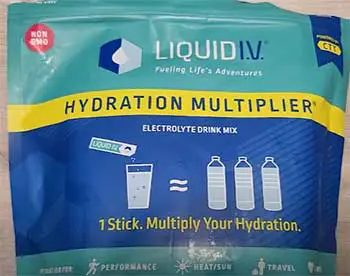
But their Cellular Transport Technology (CTT) caught my attention.
It’s a specific ratio of sodium, glucose, and potassium designed to mimic the World Health Organization’s oral rehydration solution (ORS), which helps water and electrolytes absorb quickly in your gut.
I tried their Hydration Multiplier during a hike, mixing a Lemon Lime packet into my water bottle.
The taste? Bright, tangy, and honestly refreshing—not like those overly sweet sports drinks.
Each packet packs 500 mg of sodium, 380 mg of potassium, and 11 grams of sugar (from cane sugar and stevia). It also throws in a hefty dose of vitamins: B3, B5, B6, B12, and C, covering 90-290% of your daily needs.
At 45-50 calories per serving, it’s not exactly low-cal, but it’s not a sugar bomb either. I found it especially helpful post-workout, when I needed a quick boost to avoid that shaky, drained feeling.
They also offer specialized formulas, like Energy Multiplier with caffeine-like compounds and Sleep Multiplier with melatonin, which I tried before bed. The sleep version was calming, but I’m not sold on mixing hydration with sleep aids.
Liquid I.V.’s portability is a big win. The packets are lightweight, easy to toss in a gym bag or purse, and mix well with 16 ounces of water. I loved the variety of flavors—Watermelon, Passion Fruit, Strawberry Lemonade—each one felt like a treat.
But at about $1.50 per serving, it’s not cheap, especially if you’re using it daily. Plus, the high sodium (500 mg) gave me pause for regular use, especially if you’re watching your salt intake. Still, for intense workouts or travel days, it felt like a game-changer.
Pros And Cons: Liquid I.V.
Let’s break down what I loved and what gave me pause about Liquid I.V.
Pros
- Taste That Pops: The flavors are a standout—think Watermelon or Passion Fruit that make you actually want to drink it. I found myself reaching for it even on non-workout days because it was so enjoyable.
- Vitamin Boost: The added B vitamins and vitamin C give it an edge for energy and immune support. I felt a noticeable lift after using it during long workdays.
- Portability: Those packets are a lifesaver for travel or tossing in a gym bag. I mixed one up at the airport and felt less parched after a long flight.
- Fast Absorption: The CTT formula seems to work. I felt rehydrated faster than with water alone, especially after sweating buckets in a spin class.
- Variety of Formulas: From hydration to energy to sleep, there’s something for different needs. I liked having options depending on the day.
Cons
- High Sodium: At 500 mg per serving, it’s a lot if you’re not sweating heavily or have high blood pressure. I noticed a slightly salty aftertaste in some flavors.
- Pricey: At $1.50 per packet, it adds up fast if you’re using it regularly. I winced at the cost after a month of daily use.
- Sugar Content: 11 grams of sugar isn’t terrible, but it’s higher than Pedialyte’s base offerings. I worried about overdoing it if I drank multiple packets.
- Not for Kids: While technically safe for kids over 1, the high vitamin doses and sodium make it less ideal for little ones compared to Pedialyte.
- Unproven Claims: The CTT sounds fancy, but there’s no peer-reviewed research proving it’s better than other ORS formulas. I took their claims with a grain of salt.
Pedialyte: The Tried-and-True Veteran
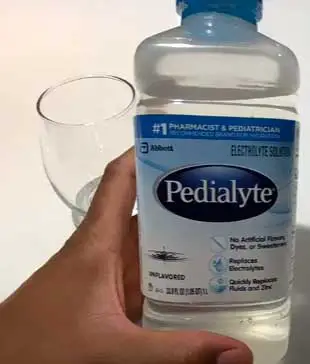
Pedialyte, on the other hand, is the old reliable.
Developed in the 1960s by Dr. Gary Cohen for kids with dehydration from illness, it’s been a staple in hospitals and homes for decades.
I first encountered it as a kid when my mom handed me a grape-flavored bottle after a stomach bug. It wasn’t love at first sip—kind of medicinal—but it worked.
Now, as an adult, I see why it’s a go-to for everything from flu recovery to hangovers.
Pedialyte’s formula is also based on the WHO’s ORS, with a focus on sodium (370-1030 mg), potassium (280-780 mg), and chloride, plus zinc in some versions for immune support. It has less sugar than Liquid I.V.—9-25 grams per serving, often from dextrose or sucralose—and fewer calories (25-40).
I tried the ready-to-drink bottles (12 ounces) and powder packets (mix with 8-12 ounces of water). The bottles are convenient for grabbing on the go, especially during a rough morning after one too many cocktails. The powder packets, though, felt less practical since they’re harder to find and require mixing.
The flavor options—Grape, Cherry, Unflavored—are more subdued than Liquid I.V.’s vibrant lineup. I found the taste less exciting but functional, especially the unflavored version for sensitive stomachs.
Pedialyte’s AdvancedCare Plus adds prebiotics for gut health, which I appreciated when recovering from a bout of food poisoning. At $1-$2 per serving, it’s slightly cheaper than Liquid I.V., especially for larger bottles. But the artificial sweeteners in some flavors (sucralose, acesulfame potassium) were a downside for me, as I prefer natural ingredients.
Pros And Cons: Pedialyte
Pedialyte’s been around forever, but does it still hold up? Here’s what I found.
Pros
- Trusted Formula: Backed by decades of use in medical settings, it’s a safe bet for illness-related dehydration. I felt confident using it during a stomach bug.
- Lower Sugar: With 9-25 grams depending on the product, it’s a better pick if you’re watching sugar intake. I appreciated this for daily hydration.
- Kid-Friendly: Designed for all ages, it’s a go-to for parents. I saw this firsthand when my nephew bounced back from a fever with the unflavored version.
- High Electrolytes: Some formulas pack up to 1030 mg of sodium and 780 mg of potassium, making it a powerhouse for severe dehydration.
- Pre-Mixed Convenience: The ready-to-drink bottles are perfect for quick relief—no mixing required. I kept one in my fridge for emergencies.
Cons
- Bland Flavors: Grape and Cherry are okay, but they lack the punch of Liquid I.V.’s offerings. I found myself dreading the taste sometimes.
- Artificial Sweeteners: Sucralose and acesulfame potassium in flavored versions were a turn-off for me. I prefer natural sweeteners like Liquid I.V.’s cane sugar.
- Less Portable: The bottles are bulkier than packets, and powder packets aren’t as widely available. I struggled to find them at my local store.
- Fewer Nutrients: No B vitamins or vitamin C here, just zinc in some formulas. I missed the extra boost Liquid I.V. provided.
- Medical Vibe: It feels like something you’d drink when sick, not for everyday use. I didn’t reach for it unless I was under the weather.
How Liquid I.V. And Pedialyte Stack Up?
To get a clearer picture, I compared Liquid I.V. and Pedialyte across key factors that mattered to me: hydration effectiveness, taste, cost, convenience, and suitability for different scenarios.
- Hydration Effectiveness
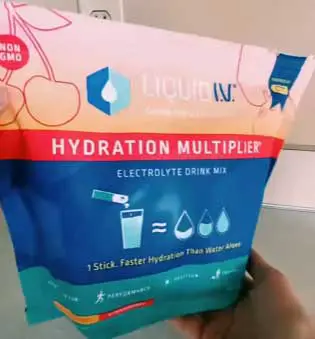
Both products follow the WHO’s ORS guidelines, combining sodium, glucose, and potassium for optimal absorption.
Liquid I.V.’s CTT claims to hydrate 2-3 times faster than water, and I did feel rehydrated quickly after a run.
Pedialyte’s higher electrolyte content (especially in Sport and AdvancedCare) makes it a beast for severe dehydration, like after vomiting.
In a pinch, both work well, but Pedialyte’s chloride and zinc give it a slight edge for illness-related dehydration.
For workouts, Liquid I.V.’s vitamin boost felt more energizing.
- Taste
Liquid I.V. wins hands-down here. Its flavors are vibrant and fun, making hydration feel like a treat. I looked forward to sipping Strawberry Lemonade after a workout. Pedialyte’s flavors, while functional, lean medicinal.
The grape flavor reminded me of cough syrup, and the unflavored option was just… meh. If you enjoy your drink, you’re more likely to stay hydrated, so Liquid I.V. takes this round.
- Cost
Liquid I.V.’s packets run about $1.50 each, while Pedialyte’s bottles or packets range from $1-$2. However, Pedialyte’s serving size is smaller (8-12 oz vs. 16 oz for Liquid I.V.), so you’re getting more liquid per dollar with Liquid I.V.
I found Pedialyte more cost-effective for occasional use, especially in larger bottles, but Liquid I.V.’s subscription discounts (if you buy direct) can close the gap.
- Convenience
Liquid I.V.’s packets are a dream for portability. I tossed them in my bag for hikes, travel, or work. Pedialyte’s pre-mixed bottles are great for instant relief, but they’re bulky for carrying around.
The powder packets are less common and require mixing, which isn’t ideal on the go. If you need something to stash anywhere, Liquid I.V. is the winner.
- Suitability
Pedialyte shines for kids, illness, or severe dehydration. Its lower sugar and kid-friendly formulas make it versatile for families. I used it when my sister’s toddler was sick, and it worked like a charm.
Liquid I.V., with its higher sodium and vitamins, is tailored for active adults—think gym-goers, travelers, or party-goers. I leaned on it during a music festival weekend and felt it kept me going. Your lifestyle dictates the better pick here.
My Experience With Liquid I.V. And Pedialyte
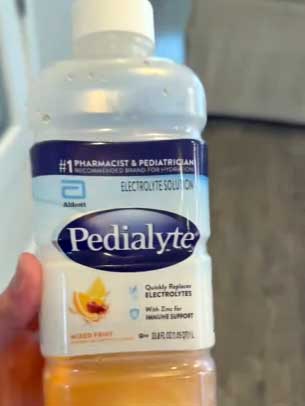
To really understand these products, I used them in different scenarios over a month.
First, I tried Liquid I.V. during a week of intense workouts—spin classes, runs, and yoga.
Mixing a packet into my water bottle before or after felt like a ritual.
The Passion Fruit flavor was my favorite, and I noticed less muscle soreness and fatigue compared to water alone.
The vitamins probably helped, but I wondered if the sodium was overkill for moderate exercise.
Next, I turned to Pedialyte during a bout of food poisoning. The pre-mixed Cherry bottle was a lifesaver when I couldn’t keep much down. It settled my stomach and restored my energy faster than expected.
The zinc and prebiotics in the AdvancedCare formula seemed to help my gut recover, but the taste wasn’t something I’d sip for fun.
For hangovers, I pitted them against each other. After a friend’s wedding, I tried Liquid I.V.’s Hydration Multiplier in the morning. It perked me up within an hour, and the Watermelon flavor masked my post-party blues.
The next time, I used Pedialyte’s Electrolyte Water. It was effective but less enjoyable—plain and clinical. Liquid I.V. felt like a treat, while Pedialyte was like taking medicine.
When To Choose Which?
Your choice depends on your needs. If you’re an athlete, traveler, or someone who loves flavorful drinks, Liquid I.V. is your vibe. Its portability, taste, and vitamin boost make it ideal for active lifestyles. I’d grab it for workouts, festivals, or long flights.
If you’re dealing with illness, have kids, or prefer a lower-sugar option, Pedialyte’s your go-to. Its medical-grade formula and pre-mixed bottles are perfect for recovery or family use. I’d stock it for flu season or emergencies.
FAQ: Your Burning Questions Answered
It depends on your needs. Pedialyte’s lower sugar and kid-friendly formula make it better for illness or children. Liquid I.V.’s vitamins and flavors suit active adults, workouts, or hangovers. Choose based on your lifestyle.
Liquid I.V.’s CTT may hydrate faster than water due to its sodium-glucose ratio, but there’s no definitive evidence it’s better than Pedialyte’s ORS-based formula. Both are effective for rehydration.
For healthy adults, Liquid I.V. is generally safe, but its high sodium (500 mg) could strain kidneys if consumed excessively, especially with kidney issues. Consult a doctor if concerned.
It’s safe for most, but the high sodium and sugar (11 g) could add up. I’d reserve it for active days or dehydration risks rather than daily use, unless advised by a doctor.
Final Thoughts: Your Hydration, Your Choice
You’ve got two solid options in Liquid I.V. and Pedialyte, each with its own strengths. I love Liquid I.V.’s vibrant flavors and portability for my active days—whether I’m hitting the gym or surviving a long flight.
But Pedialyte’s reliability and lower sugar content make it my pick when I’m under the weather or helping a sick family member. Think about your needs: Are you chasing a quick hydration boost with a tasty twist, or do you need a no-frills solution for recovery?
Grab the one that fits your life, sip it, and feel the difference. Stay hydrated, you got this!
